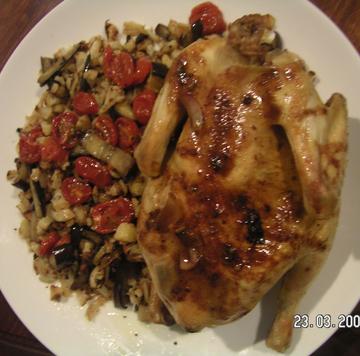Introduction: The Curious Case of My Fading Kale
A
few years ago, I could count on my kale patch to provide a steady supply of
big, dark, and sturdy leaves. Whether tossed into smoothies or sautéed with
garlic, this hardy green was the pride of my garden. But this past season,
something changed. The kale leaves were thinner. Their color faded. The taste?
More bitter than bold.
I
hadn’t changed my care routine. Same compost, same watering schedule, same sun
exposure. So what was different?
After
digging into research, I discovered something unexpected: climate change is
not only altering our environment—it’s weakening the very food we grow.
The Problem: Climate Stress and Nutrient Decline
It
turns out, I wasn’t alone. Across the world, home gardeners and small-scale
farmers are reporting similar issues—leafy greens that grow smaller, wilt
faster, or lack the nutritional punch they once had.
One
major culprit? Elevated carbon dioxide (CO₂) levels.
Recent
studies show that while higher CO₂ can initially stimulate plant growth, it
also reduces key nutrients like iron, zinc, calcium, and protein in many
vegetables—especially leafy greens like kale, spinach, and arugula.
Add
higher temperatures, unpredictable rainfall, and degraded soil, and you’ve got
a recipe for struggling crops—even in home gardens.
Why This Matters More Than You Think
For
gardeners, this isn’t just a quality issue—it’s a health issue. Kale, known for
its dense nutritional profile, may no longer offer the same benefits as it did
a few years ago. And if you grow your own food for sustainability or health,
this shift hits even harder.
But
the good news? You can fight back with strategy and knowledge.
Practical & Innovative Solutions for Healthier Greens
Here’s
what I did—and what you can do too—to revitalize your greens and restore your
garden’s strength:
1. Choose Heritage and Climate-Resilient Varieties
Modern
seeds are often bred for appearance and yield, not nutrition. Look for heirloom
or heritage kale seeds that have been preserved for flavor, resilience, and
depth of nutrients. Some varieties are more drought-tolerant or heat-resistant
than others.
- 🌱 Try: Lacinato (Dinosaur) Kale or Red Russian Kale
- 🌍 Tip: Look for seeds labeled “open-pollinated” or “climate-adapted”
2. Boost Your Soil’s Nutrition the Right Way
Nutrient-dense
greens start with nutrient-rich soil. Climate stress can deplete soils of
organic matter quickly.
What helps?
- Regular
compost applications
- Worm
castings and mycorrhizal fungi
- Biochar for moisture
retention and carbon capture
Test
your soil at least once a year and adjust pH and mineral content as needed.
Even adding crushed eggshells or seaweed powder can make a difference.
3. Time Your Planting with Shifting Seasons
With
warmer springs and hotter summers, timing matters more than ever.
- Start kale earlier in
spring, or plant late summer for a strong fall harvest.
- Provide partial shade
in mid-summer using shade cloth or companion plants like sunflowers or
tall herbs.
- Use mulch to regulate
soil temperature and moisture.
4. Grow Smarter with Raised Beds or Containers
Elevated
CO₂ and heat don’t just affect the air—they change how soil holds moisture and
nutrients.
Raised
beds or deep containers:
- Help
control soil quality
- Improve
drainage and root health
- Make it easier to
adapt to extreme weather with covers or insulation
5. Monitor Microclimates in Your Garden
Pay
attention to how the sun, shade, and wind behave in your specific space.
- Use thermometers to
monitor heat zones
- Try grouping your
greens in the coolest part of the garden
- Plant trees or build
simple trellises to create natural windbreaks and shade
Even
a small shift in garden layout can reduce climate stress significantly.
6. Water Wisely and Consistently
Inconsistent
watering—either too much or too little—is one of the top causes of weak greens.
- Water deeply 2–3
times per week rather than lightly every day
- Use drip irrigation
or soaker hoses to reduce evaporation
- Add a layer of mulch
to retain moisture and reduce weeds
7. Rotate and Companion Plant
Kale
is sensitive to soil fatigue. Don’t plant it in the same spot each season.
- Rotate
crops every year
- Pair kale with
nitrogen-fixing plants like beans or peas
- Avoid planting with
other brassicas to reduce disease pressure
Final Reflections: Don’t Give Up on Your Greens
Yes,
the climate is changing. And yes, it’s affecting the food we grow—even in
backyard gardens. But gardening has always been an act of resilience and
adaptation.
Kale
might not thrive the way it once did without a little help, but with the right
strategies, we can still grow delicious, nutrient-rich greens. More
importantly, we can teach future generations how to care for the earth while
feeding themselves well.
Conclusion: Grow Smarter, Not Just Harder
If
you’ve noticed a decline in your kale or other leafy greens, you’re not
imagining it. Climate change is reshaping the rules of gardening—but it’s not
unbeatable. From seed choice to soil health, timing, and layout, small actions
lead to powerful results.
Let your garden evolve with the times. Nature has always adapted, and so can we.





0 Comments